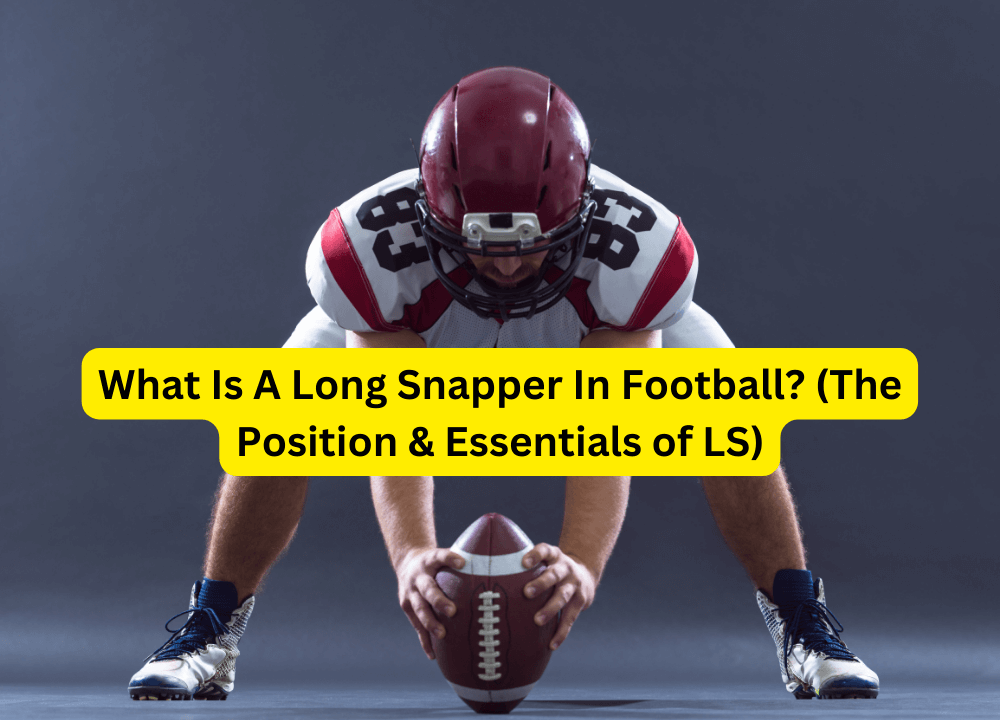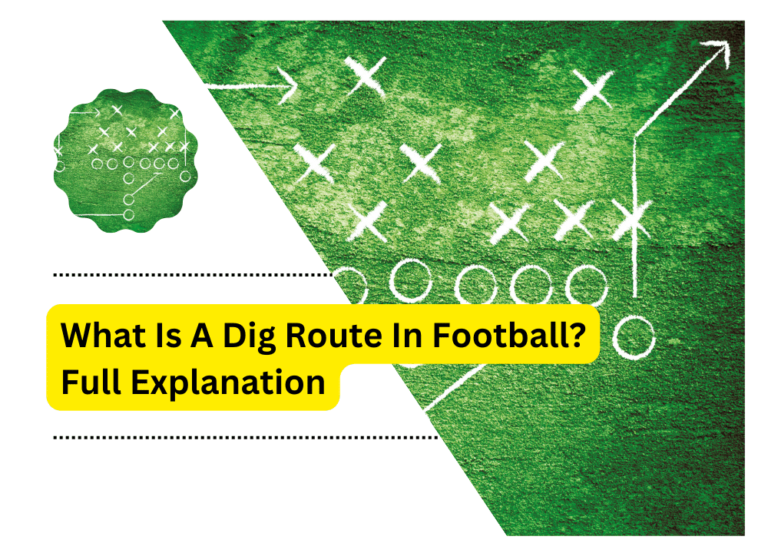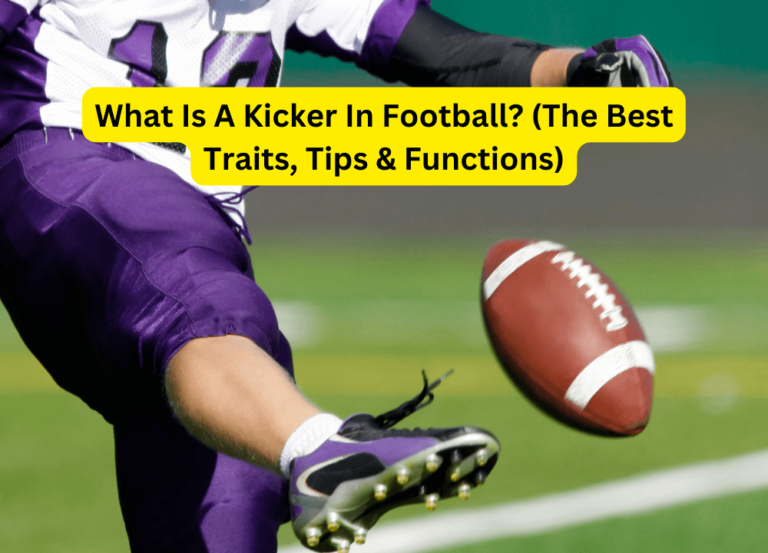What Is A Long Snapper In Football? (The Position & Essentials of LS)

In general, the long snapper, a particular offensive player in football, delivers the ball to the holder during a field goal and to the punter during a punt. Being a niche position, most teams have a long snapper in the squad.
However, knowing what is a long snapper in football doesn’t involve only this. There is a lot more to know that we will discuss in our today’s guide. So, let’s get a quick jump into it and find out how you can also become a long snapper in football.
What Is A Long Snapper in Football Referred To?
The term “special teams player” also refers to long snappers. A specialized center employed in the special teams unit is called a long snapper. This position’s primary responsibility is to snap the ball farther, often seven to fifteen yards, for field goal tries and punts.
However, a long snapper is a specialized position in football that is most frequently encountered in American and Canadian football. The long snapper’s primary duty is to swiftly and precisely pass the ball to the punter or holder for a field goal or extra point attempt.
What Are The Essentials to Be a Long Snapper?
Long legs are considered the most crucial part of his body
A long snapper generates most of its power from its legs, while your arms are secondary muscles for a long snapper. Most energy is generated through the legs, even though the long stroke is an inverted pass. But the stronger they are, the quicker you can return the ball to the holder or punter.
Practice makes perfect
Perfection is achieved through practice. Spend almost as much time working on your long snaps as you practice throughout the day. Success depends on such training. Because long snapping relies on muscle memory, the long snapper must find ways to use the same motion to snap the ball.
Everything can be done at any time.
Long snappers must have imagination. Kickers, punters, and long snappers should fill in the remaining two and a half hours of practice because the more time they put in, the better their chances of success.
Focus on details
Less can be more. While long snapping is not tricky to master, one must maintain focus throughout the game. Special teams may be called back onto the field sooner than expected in the event of a quick change of possession or a brief offensive streak. The task is easy, though. It should be done with utmost honesty when entering the field.
Overcoming thoughts
Long stretches require more mental health than physical skills. A long snapper can catch the football at times. If he hesitates, he can lose up when the ball is thrown, which keeps him perfectly in his confident hands. If you lack self-confidence, accidents can happen.
Long Snapper has excellent timing and accuracy.
Precision, consistency, and the capacity to snap under pressure are necessary for long snapping. Honestly, talented long snappers frequently undergo intensive training and practice. They must have excellent timing and precision to guarantee a precise and speedy ball delivery.
How well-versed in the long snap are you?
The long snapper must be able to traverse a distance between 7 and 15 yards quickly and correctly to complete a long snap successfully. Only field goals, extra points, and punts are used in kicking situations where long shots and snappers are used.
Main Functions of Long Snappers
The long snapper’s job is to hike the ball to the punter or holder on the punt team or the holder on field goals, respectively. His primary duty is to quickly and accurately deliver a snap to the location where the experts are looking for it.
When kicking a punt, most punters prefer to have the ball at waist height and in front of their kicking leg, whereas field goal and extra point holders prefer to have the ball snapped in front of their rear shoulder.
As the snap is released, he moves to the middle of the offensive line as a blocker. He must also move downfield after the punt leaves the field and is anticipated to be one of the first players in coverage of the opposition returners.
Responsibilities of Long Snapper
- Snappers have significant duty since they risk losing possession of the ball and handing it to the other team if the holder or punter cannot quickly receive it from the snapper.
- The snapper is still involved in the play even after he snaps the ball.
- The punter or holder will then have time to manage the ball before the kick, and his responsibility is to stop any advancing defenders.
- A poor snap results in the ball not going to the holder’s hands and complicates the play.
- For snappers, timing is crucial. It enables the kicker to deliver a quick and precise kick.
- The snapper is in charge of providing a perfect snap every time.
- Long snappers frequently avoid tackling and blocking in favor of other on-field players.
- They frequently move to defend the punter or offer coverage in the event of a fake punt after taking the snap.
- Long snappers could occasionally additionally be in charge of recovering any missed snaps.
Positioning of Long Snappers
A member of the special teams who excels in snapping the ball farther down the field is known as a long snapper. On kickoff plays, they are positioned in the middle of the formation. An average shotgun snap is 5 yards long.
The long snapper will throw the ball around fifteen yards on a punt.
The long snapper will throw the ball around seven yards to a player known as the holder for field goals and extra points. Then, the holder must secure the ball for the placekicker.
Long snappers often have their spot on the roster and may not play any other positions on the squad because of the specialized nature of the job. They are vital to the success of punts, field goals, and extra-point tries and are frequently highly regarded for their unique skill set.
Notable Long Snappers
- Nolan Cromwell
- David Humm Sam Koch
- Steve DeOssie
- Patrick Mannelly
- Don Muhlbach
- Zak DeOssie
- Morgan Co
- Josh Harris
- Jonathan Weeks
- Nick Sundberg
- J.J. Jansen
- L. P. Ladouceur
- Beau Brinkley
- Jacob McQuaide
Long Snapper’s Unique Snapping Technique
The long snapper, typically positioned in the middle of the offensive line, carries out the long snap, which entails snapping the ball through the legs in extended, quick action.
This unique snapping technique gives the punter or holder extra time to complete their respective jobs by allowing the ball to travel a longer distance (usually 7-8 yards) before reaching them.
Is a Long Snapper Considered a Center?
Some coaches believe using a backup quarterback as the long snapper is a brilliant idea, and some teams will do it. NFL clubs still need to employ a specialized long snapper, but it’s becoming more straightforward to locate quarterbacks and other lines who understand this position while still performing well on the field.
Key Takeaways And Conclusion:
- Long snappers are crucial because their precision dictates whether or not the trying side will have the chance to get a solid field goal or punting attempt.
- Not messing up the punt or field goal is the principal objective of this function.
- The snapper snaps the ball in a spiral to increase speed and facilitate handling.
- Long snappers are essential to the special teams and frequently go unnoticed.
- It’s important to note that the long snapper frequently fills the only job without a formal title.
- They are either a member of the special teams or a backup.
- They ensure everyone can see the game, including the punter, holder, and coach.
Even though casual fans sometimes overlook tall snappers, they rarely come into the public eye as they are often in the background. Play and are less likely to be asked to make a big play or lift.
Most trophy-long snappers do their business as usual, but you shouldn’t take this for granted because even the most experienced long snappers are prone to making mistakes that can change the game.






